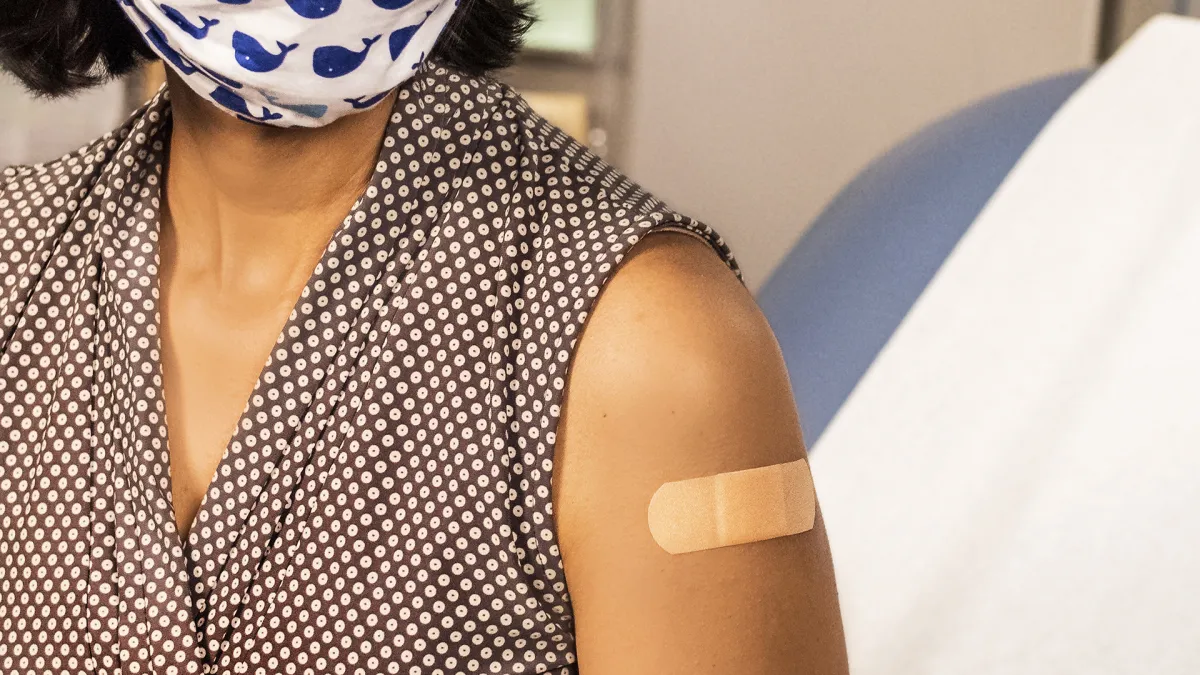Who got the jab?

Australia has been praised as a highly vaccinated population – with over 95% of people aged 16 and over fully vaccinated. But this impressive vaccination rate hides inequalities and differences in uptake within our population.
It’s this difference that Dr Jenny Welsh and colleagues from ANU and the Department of Health want to unpack. To help them understand these finer details, the team have used linked individual vaccination data recorded by the Australian Immunisation Register (AIR) up to 10 January 2022, with sociodemographic information collected with the 2016 Census.
“By using the linked data, we can look at who is being vaccinated in many more ways that we have been able to previously. This includes looking at uptake according to household income, education, country of birth, employment status, and disability,” says Welsh.
The research team are particularly interested in the relationship between socioeconomic position and vaccine uptake, and found clear gaps.
“We looked at the proportion of adults who had received their first jab according to household income and found that higher income households had a larger proportion of people vaccinated compared to lower income household,” says Welsh.
Another measure of socioeconomic position is level of educational attainment, and researchers found this characteristic to be an indicator of vaccination uptake as well. In this instance, lower levels of education were associated with lower uptake of COVID-19 vaccines compared to higher levels of education, for example to those holding a university degree. These education-related gaps were largest in the younger and middle age adults (20-49 years), and in the states and territories that had the lowest overall vaccine uptake at the time of the study (i.e. Queensland and Western Australia). It is important to note that uptake of COVID-19 vaccines have altered in these jurisdictions since the time of the study.
Other groups less likely to be vaccinated include those who speak a language other than English, those who speak no English, those people born overseas, non-citizens, and those who were not employed.
Jurisdictions with the highest vaccination rates are Victoria and the Australian Capital Territory (at the time of the study), with those living in cities being the most likely to be vaccinated. For the most part, older Australians were more likely to be vaccinated, in particular those aged 65-74 years old. People working professionally, and community and personal service workers (e.g. those in healthcare, education, hospitality, policing, etc.) were most likely to be vaccinated.
While more research is needed on why uptake of COVID-19 vaccines are different across different groups in the population, it certainly informs future vaccination efforts and policies. By identifying groups that have higher or lower vaccine uptake, researchers can work to learn about potential barriers to vaccination, as well as potential motivations.
“If you're trying to work on how to increase vaccine uptake more broadly, then you need to know who is not getting vaccinated, and where to target your efforts,” says Welsh.
“Australia has a really high average vaccine uptake, but what's behind this is a gradient with some populations having lower vaccination rates, relatively speaking. We need to boost vaccine uptake for these groups, because it will help protect some of the most vulnerable communities.”
*You can read more about this project, and download the report from the Understanding socio-demographic cohorts in the COVID-19 Vaccines Strategy website. This research is a collaboration between the Australian National University and the Australian Government Department of Health. Vaccine uptake data is from July 2021, October 2021, and January 2022. The Census data used in this research is from 2016.
By Liz Drummond.
